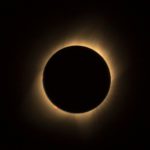Chemical in sunscreen attacks coral reefs

Santo Domingo /PRNewswire/.– A new study published today in a toxicology journal has found that achemical widely used in personal care products such as sunscreen, poses anecological threat to corals and coral reefs and threatens their existence.
Oxybenzone is foundin over 3,500 sunscreen products worldwide, and pollutes coral reefs fromswimmers wearing sunscreens and through wastewater discharges from municipalsewage outfalls and from coastal septic systems.
The study comes lessthan two weeks after NOAA declared the third ever global coral bleaching eventand warned that locally produced threats to coral, such as pollution, stressthe health of corals and decrease the likelihood that they will resistbleaching, or recover from it.
It demonstrates thatexposure of coral planulae (baby coral) to oxybenzone, produces grossmorphological deformities, damages their DNA, and, most alarmingly, acts as anendocrine disruptor. The latter causes the coral to encase itself in its ownskeleton leading to death.
These effects wereobserved as low as 62 parts per trillion, the equivalent to a drop of water insix and a half Olympic-sized swimming pools.
Measurements ofoxybenzone in seawater within coral reefs in Hawaii and the U.S. VirginIslands, for example, found concentrations ranging from 800 parts per trillionto 1.4 parts per million. This is over12 times higher than the concentrations necessary to impact on coral.
A team of marinescientists from Virginia, Florida, Israel, the National Aquarium (US) and theUS National Oceanic & Atmospheric Administration, undertook the study.
Lead author Dr. CraigDowns of Haereticus Environmental Laboratory Virginia, said, "The use ofoxybenzone-containing products needs to be seriously deliberated in islands andareas where coral reef conservation is a critical issue.
We have lost at least80% of the coral reefs in the Caribbean. Any small effort to reduce oxybenzonepollution could mean that a coral reef survives a long, hot summer, or that adegraded area recovers. Everyone wants to build coral nurseries for reefrestoration, but this will achieve little if the factors that originally killedoff the reef remain or intensify in the environment."
Between 6,000 and14,000 tons of sunscreen lotion are emitted into coral reef areas each year,much of which contains between one and 10% oxybenzone.
Further informationabout the study can be found at haereticus-lab.org and marinesafe.org.
















